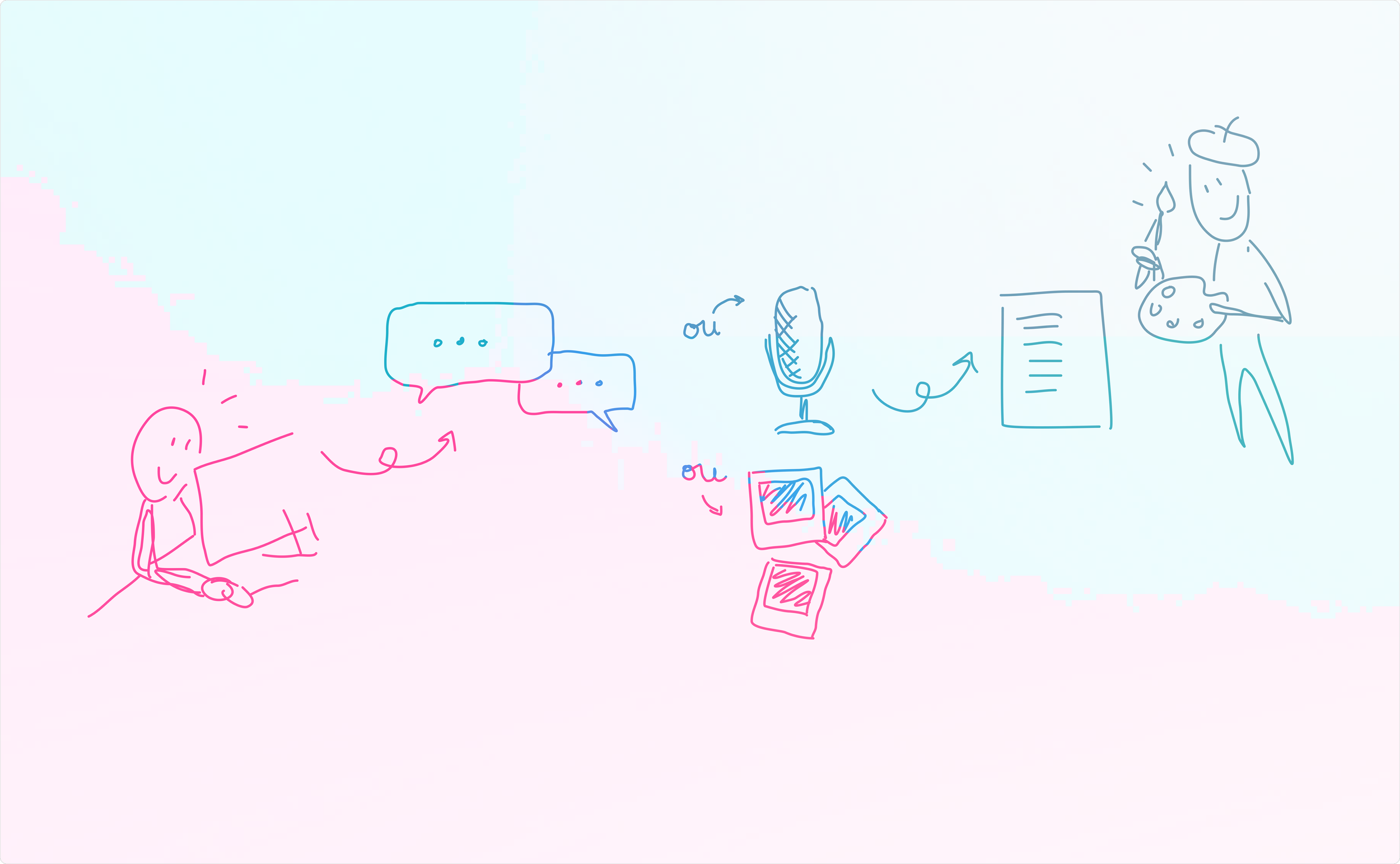
AI & Design
Design manager
Docaposte
Leading a Team of Data Scientists and UX Designers with this guiding question: How can artificial intelligence improve the customer experience across our solutions?
With the rise of AI, Docaposte has established a cross-functional team to explore how to enhance customer experience while maintaining our business values.
Design Manager / Team Lead
Led a cross-functional team of data scientists and UX designers to integrate AI into customer experiences
Missions as lead:
- Advocated for user-centered AI, balancing technical feasibility with business value
- Ensured seamless collaboration between data science and design teams
2024
What I’ve learned:
AI is more than just chatbots—its full potential lies in solving real user needs through multiple approaches.
A cross-functional team
70% Data scientists
30% UX/UI Designers
Funded by the executive committee, ensuring a budget independent of business units—effectively making it a free resource for BUs.
3 ways of working together
Ideation
Ideation to deliver innovative solutions and API-driven Proof of Concepts (POCs) to ensure reusability across projects.
Team missions: Field observation, Audit, Workshops, Target vision
POC
Prioritizing POCs based on business value and feasibility Diagnostic data : No data, no solution
Missions: UX Research, Workshop facilitation
Assessing the project’s data value potential
Ensuring the proper functioning of the AI solution
Providing a first, lightweight front-end experience
Industrialization
Not covered by the executive committee’s budget, this has become a major transformation challenge for the team.
The key issue: avoiding the trap of working on POCs that never materialize—risking that the team’s expertise remains theoretical rather than delivering real impact.
Use case : LaPosteGPT
Generative AI for Employees for La Poste Group
Project Objectives:
Define the target vision for a unified platform as the go-to entry point for Generative AI tools.
Design and prototype the first version (V1) of La Poste GPT as well as the target vision for the platform.
Success Criteria:
A clear vision: The platform becomes an essential daily reflex.
Perceived value: The tool is indispensable in users’ workflows.
“What if the future of AI in business isn't generalist, but specialized—trained on deep industry knowledge to deliver precise, reliable, and transformative solutions?”
— Us at some point
But what if the real game-changer isn't just specialization, but how we centralize or integrate AI tools?
“Centralized platforms vs seamless integrations—what’s the best path to empower your teams and workflows?”
— Also us at another point
A step-by-step methodology
Step 1 - Personae
Questions informed by business insights into user needs:
Who are the target users?
All employees (personal assistant)?
Different teams with specific needs?
Both experienced and new users?
Is there existing user feedback or data available?
What are the users' expectations?
What current user problems are we trying to solve with this project?
Step 2 - Target Vision workshop
WIP


